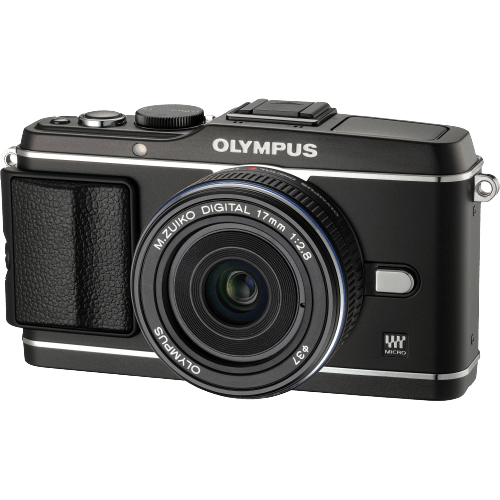Olympus PEN E-P3 Specs and Scores

The Olympus PEN E-P3 scores a 45/100 in our evaluation. This mirrorless camera, announced on June 30, 2011, and released the same year, initially retailed for $1000. Measuring 122 x 69 x 34mm and weighing 369g (0.81lbs), the E-P3 offers a compact and lightweight design.
In today’s market, the Olympus PEN E-P3’s specifications may not stand out compared to newer models. However, its compact size and weight make it a suitable choice for casual photographers seeking a user-friendly and portable camera.
Olympus PEN E-P3 Overview and Optics
The Olympus PEN E-P3 optics receive a score of 45 out of 100. This camera is equipped with a 12.3-megapixel CMOS sensor and a TruePic VI processor. The sensor size is Micro Four Thirds, which is smaller than the APS-C sensors found in many current mirrorless cameras. Despite its smaller size, the sensor has a DXOMARK score of 51, which is decent for its class.
This camera has a Micro 4/3 lens mount, offering compatibility with a wide range of lenses. The E-P3 also includes image stabilization, a useful feature for reducing camera shake and improving image quality. Its shooting speed is 3 frames per second, which is slower than many modern cameras but still sufficient for casual photography. The aspect ratio is the standard 4:3.
Comparing the Olympus PEN E-P3’s optics to today’s market, it is evident that the camera has fallen behind in terms of sensor size and performance. However, the wide lens compatibility and image stabilization features still make it a viable option for those looking for a compact and affordable camera.
Olympus PEN E-P3 Video Performance
The Olympus PEN E-P3 has a video score of 56 out of 100. It offers a maximum video resolution of Full HD (1920 x 1080) and a maximum video frame rate of 60fps. Unfortunately, this camera lacks built-in time-lapse functionality.
When comparing the E-P3’s video capabilities to other cameras in today’s market, it falls short. Full HD resolution is now considered standard, with many modern cameras offering 4K video resolution. Additionally, a 60fps frame rate is typical, but not exceptional. The absence of time-lapse functionality further limits the camera’s video versatility.
The Olympus PEN E-P3 has acceptable video features for casual users, but it does not stand out among competitors. Those seeking advanced video capabilities may want to consider other options.
Olympus PEN E-P3 Features and Benefits
The Olympus PEN E-P3 receives a feature score of 52 out of 100. This camera comes with a 3-inch touchscreen, providing an interactive experience for users. However, it does not include a flip screen, GPS, Wi-Fi, or Bluetooth capabilities. With a screen resolution of 614,000 dots, the image quality on the display is decent but not exceptional.
Comparing the E-P3’s features to today’s market, it falls short in terms of connectivity and flexibility. Most modern cameras offer Wi-Fi and Bluetooth options for easy sharing and remote control, as well as flip screens for versatile shooting angles. The lack of GPS is also a drawback for those who wish to geotag their photos.
Taking these factors into account, the Olympus PEN E-P3 may not be the best choice for those seeking advanced features and connectivity. However, it remains a solid option for users who prioritize simplicity and a straightforward shooting experience.
Olympus PEN E-P3 Storage and Battery
The Olympus PEN E-P3 receives a storage and battery score of 21/100. It has one memory card slot, accepting SD, SDHC, and SDXC cards. The battery life lasts for 330 shots, using a BLS-5 battery type. USB charging is not available for this camera.
Comparing these specifications with today’s market, the E-P3 falls short in terms of battery life and charging options. Many modern cameras offer longer battery life and USB charging capabilities. However, the memory card compatibility is still relevant and useful.
The E-P3’s storage and battery performance is less competitive in the current market, but its memory card compatibility remains valuable.
